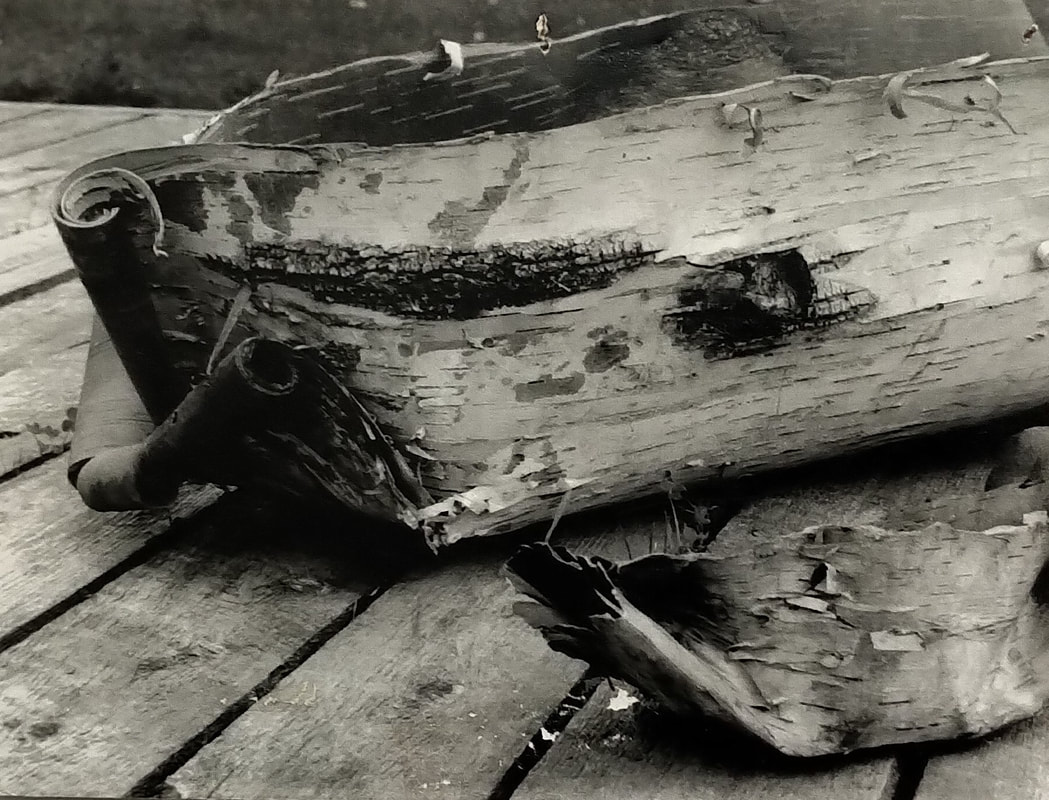|
An oral history tells of Algonquins who made their way from the eastern Quebec regions down the Ottawa River to the Mississippi River when the waterways began to melt in spring. From the Mississippi, they travelled along a smaller river that led them to a pair of lakes. At the south end of the narrow lake, they found a natural rise in the landscape that is known locally as Porcupine Mountain. (C. Smith) A grove of tamarack trees provided food for many porcupines as well as valuable items for the Algonquins. The porcupine quills could serve as needles for stitching and decorative pieces. The tamarack wood was useful for constructing things like snowshoes. The inner bark could be scraped, ground and added to flour. The fresh, spring tree needles were boiled to make a soothing tea. Boiled spring shoots made a nutritious food. The lake nearby provided opportunity to fish and the surrounding forest had plenty of wildlife for hunting. At the base of the natural rise in the land, very large maple trees were abundant. This area was naturally sheltered and made an ideal place for a spring camp and an excellent area to harvest maple sugar. The following map shows Taylor Lake with the area of Porcupine Mountain being located at the bottom of the map. The map indicates the existence of maple and tamarack trees in that area. A small cottage is indicated by a square at the top, right corner. . This would have been the cabin of Joe Baye. For a clearer version of the map to view these details, click on the map. It is said that the Algonquins harvested the maple sugar from the trees by making a horizontal slash in the bark of the tree with an axe. A flat piece of birch bark, wood chip or reed was wedged into the cut and positioned on an angle to direct the sap that flowed from the opening to a birch bark trough placed at the bottom of the tree. Birch bark is pliable and liquid proof making it useful for this purpose. When the settlers arrived in the area, they watched as the Algonquins heated rocks in the coals of the fire and then placed these hot rocks into the sap in the birch troughs. They repeated this process until the water content of the sap had evaporated in steam and left a concentrated, sugary substance in the trough. This substance could be scraped out and packed into small bark molds called mokuks. They used this sugar substance to sweeten and preserve their food. Eventually, as they became available, iron pots were suspended over fire and used to boil sap. Then long, flat pans known as ‘finishing pans’ were placed over dug out troughs with stones placed around the edges to hold the pans over the fire below. The Middleville and District Museum has an informative and interesting display of maple sugar artifacts. Be sure to check it out on your next visit to the Museum.
0 Comments
Leave a Reply. |
AuthorThis journal is written, researched, and maintained by the volunteers of the Middleville Museum. |





